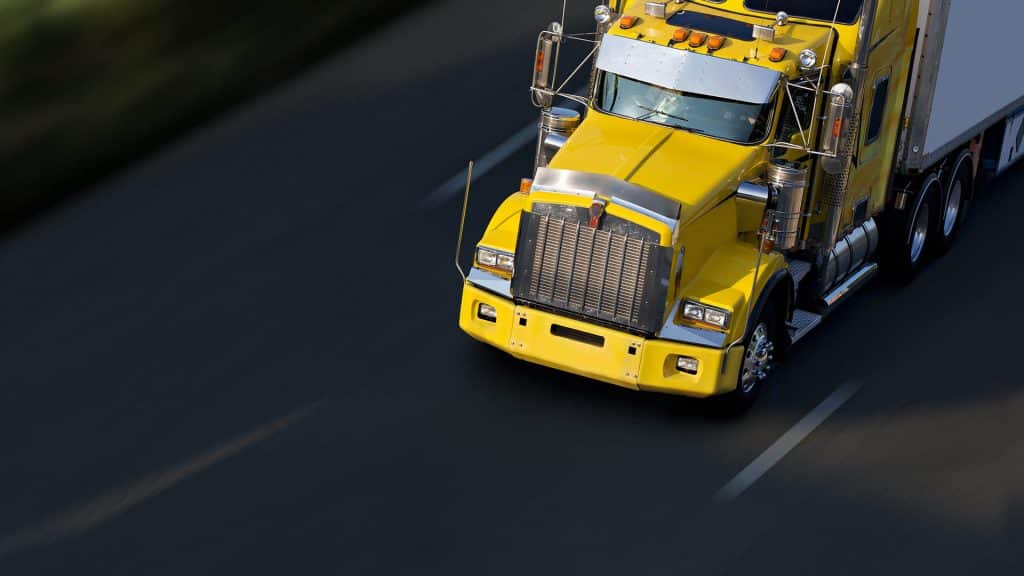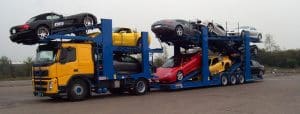Introduction: The Growing Demand For Transporting Heavy Equipment
The transportation of heavy equipment has become an essential aspect of numerous industries, driven by the growing demand for advanced machinery and infrastructure development. Heavy equipment, including construction machinery, industrial tools, and specialized vehicles, plays a critical role in various sectors such as construction, mining, agriculture, and manufacturing. However, the transportation of these massive machines poses significant challenges that require innovative solutions to ensure safe and efficient delivery.
One of the main challenges in transporting heavy equipment is their sheer size and weight. These machines often exceed standard weight limits imposed by road regulations, necessitating careful planning and adherence to specific transportation guidelines. Additionally, the dimensions of heavy equipment can be substantial, making it difficult to navigate through narrow roads or congested urban areas. Moreover, the delicate nature of certain types of equipment requires special handling techniques to prevent damage during transit.
To address these challenges effectively, industry professionals have devised innovative solutions that enable the safe movement of heavy equipment over long distances. These solutions involve utilizing specialized trailers with enhanced load-bearing capacities and employing advanced technology for route planning and monitoring. Furthermore, collaboration between transportation companies and regulatory bodies has paved the way for establishing comprehensive safety protocols that prioritize minimizing risks associated with transporting heavy machinery.
Challenges Faced In Transporting Heavy Equipment
Transporting heavy equipment poses numerous challenges that require careful planning and execution to ensure a successful and safe transportation process. One significant challenge is the sheer size and weight of the equipment, which often exceeds the limitations of standard transportation methods. The dimensions and weight can pose difficulties in finding suitable transportation vehicles capable of carrying such heavy loads. Another challenge is navigating through various terrains and environments.
Heavy equipment may need to be transported over rough, uneven, or narrow roads, which can pose a risk to both the equipment and other road users. Additionally, transporting heavy machinery across long distances may involve crossing different types of terrain like mountains, deserts, or water bodies. Ensuring proper handling and securing of heavy equipment is crucial to prevent damage during transit.
Improper loading or unloading procedures can lead to accidents or equipment malfunction. Moreover, some machines require specialized knowledge for disassembling and reassembling before and after transportation. Permitting requirements are also challenging when transporting heavy machinery. Many jurisdictions have strict regulations regarding oversized loads that necessitate obtaining special permits in advance. Lastly, unforeseen circumstances such as adverse weather conditions or traffic delays can further complicate the transportation process.
Solutions To Overcome Transportation Challenges For Heavy Equipment
Transporting heavy equipment presents unique challenges that require specialized solutions to ensure safe and efficient delivery. Here are some effective strategies to overcome these obstacles:
1. Customized Transport Planning: A crucial step is developing a detailed transport plan tailored to the specific equipment and route. This involves conducting thorough site assessments, considering weight and size restrictions, and identifying potential obstacles such as low bridges or narrow roads. 2. Specialized Trailers and Equipment: Utilizing specialized trailers, such as flatbeds, lowboys, or extendable trailers, ensures secure transportation for heavy machinery.
Additionally, employing equipment like cranes or forklifts with adequate lifting capacity streamlines loading and unloading processes. 3. Rigorous Safety Measures: Prioritizing safety is paramount when moving heavy equipment. Implementing rigorous safety protocols includes securing the load with chains or straps, utilizing proper signage and lighting for visibility, and adhering to speed limits during transit. 4. Trained Personnel: Employing skilled operators who possess expertise in handling heavy equipment can significantly mitigate risks during transportation.
Their knowledge of securing loads properly and navigating challenging terrains ensures a smooth journey. 5.
Ensuring Safety And Compliance In Transporting Heavy Equipment
Transporting heavy equipment poses numerous challenges that must be addressed to ensure safety and compliance with regulations. One of the primary concerns is the weight and size of the equipment being transported, as it often exceeds the limitations of standard transportation methods. This necessitates careful planning and coordination to mitigate potential risks. To ensure safety during transportation, it is crucial to conduct a thorough assessment of the equipment’s weight, dimensions, and structural integrity.
This will help determine the appropriate mode of transportation, such as flatbed trucks or specialized trailers designed for heavy loads. Moreover, compliance with legal requirements is paramount when transporting heavy equipment. Proper permits must be obtained based on local, state, and federal regulations to avoid legal complications or delays. Additionally, adherence to specific route restrictions ensures that any obstacles or limitations are considered beforehand.
Securing heavy equipment adequately is another critical aspect of ensuring safety during transportation. Utilizing proper rigging techniques, including chains, straps, or braces specific to each piece of equipment’s design and weight distribution, prevents shifting or damage during transit. Regular inspections throughout the journey are essential to identify any potential hazards or mechanical failures promptly. Close collaboration between transporters and regulatory bodies can also aid in addressing emerging challenges effectively.
Future Trends And Innovations In Transporting Heavy Equipment
As technology continues to advance, the transportation industry is witnessing a significant transformation in the way heavy equipment is transported. These innovations are driven by the need for improved efficiency, safety, and cost-effectiveness. One of the prominent future trends in transporting heavy equipment is the development of autonomous vehicles. Self-driving trucks equipped with advanced sensors and artificial intelligence algorithms can greatly enhance the transportation process.
These vehicles can operate 24/7 without human intervention, reducing labor costs and increasing productivity. Moreover, they have the potential to minimize accidents caused by human error. Another innovation on the horizon is the implementation of drone technology for transporting heavy equipment. Drones equipped with powerful motors and precise navigation systems can efficiently transport smaller equipment over short distances or to remote locations.
This not only reduces transportation time but also eliminates road congestion and minimizes environmental impact. Additionally, advancements in virtual reality (VR) and augmented reality (AR) technologies are revolutionizing heavy equipment transportation training. VR simulations allow operators to practice complex maneuvers without real-world risks, enhancing their skills while reducing accidents during transportation operations. Furthermore, there is a growing focus on developing eco-friendly solutions for transporting heavy equipment.








